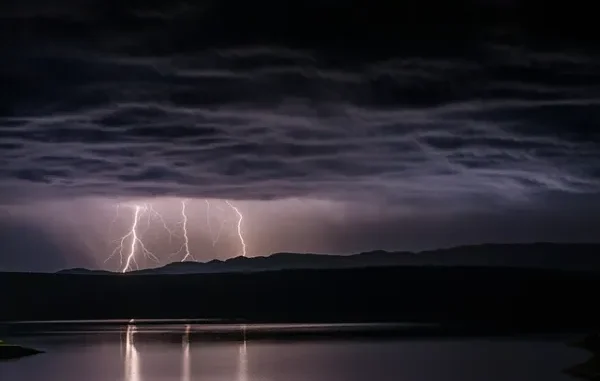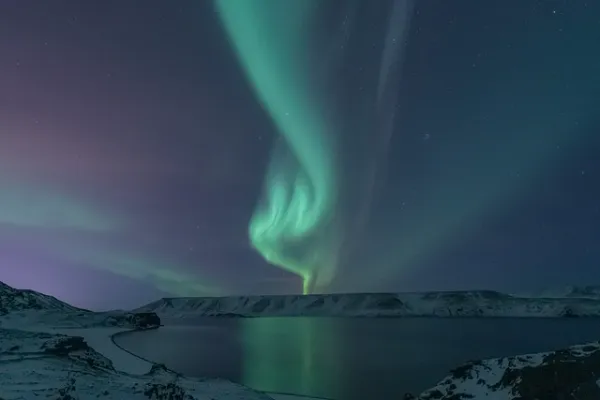
Weather is something we often take for granted, but when it displays its most remarkable qualities, it reminds us of the awe-inspiring forces at work in nature. From the warmth of a sunbeam to the chill of a frosty morning, weather shapes our lives in ways we might not always notice. But there are certain moments—certain conditions—that remind us of just how amazing and mysterious weather can be.
In this article, we will explore the various types of amazing weather phenomena, why they occur, and how they captivate our imagination. Whether it’s the grandeur of a thunderstorm or the surreal beauty of the Northern Lights, the world of weather holds countless wonders waiting to be discovered.

1. Thunderstorms: The Raw Power of Nature
Few weather events capture our attention quite like a thunderstorm. When the sky darkens, the air grows thick with anticipation, and the first rumble of thunder echoes across the landscape, we are reminded of the immense energy and power contained in the atmosphere.
Thunderstorms are formed when warm, moist air rises rapidly into cooler parts of the atmosphere, causing the water vapor to condense and form clouds. As this process continues, energy is released in the form of electrical charges, leading to the striking displays of lightning that accompany these storms. Thunder, the sound that follows a lightning strike, is caused by the rapid expansion of heated air.
What makes thunderstorms so amazing is not just the spectacle, but also the sheer scale of their power. A single lightning bolt can carry up to a billion volts of electricity and heat the surrounding air to temperatures hotter than the surface of the sun. In some regions of the world, thunderstorms occur almost daily, transforming the sky into a battleground of light and sound that has mesmerized observers for centuries.
2. Northern Lights: A Magical Light Show from the Heavens
The Northern Lights, or aurora borealis, are among the most visually stunning weather phenomena on Earth. These brilliant displays of light occur near the magnetic poles of the Earth, where solar wind particles collide with gases in the atmosphere, causing them to emit colorful, glowing lights.
The colors of the aurora vary depending on which gases are involved and their altitude in the atmosphere. Greens are most common, caused by oxygen molecules high in the atmosphere, but purples, reds, and even pinks can also be seen. The beauty of the Northern Lights has captivated people for millennia, and today, they remain one of the most sought-after natural experiences for travelers.
But what makes the Northern Lights even more incredible is that their occurrence is linked to solar activity. Solar flares and coronal mass ejections can intensify the aurora, making the light shows even more spectacular. This means that the weather conditions needed to witness such a phenomenon are ever-changing, creating a sense of mystery and excitement for those lucky enough to witness the lights in person.
3. Rainbows: Nature’s Colorful Art
Rainbows are one of the simplest yet most beautiful weather phenomena. These vibrant arcs of color appear when sunlight refracts, or bends, through water droplets in the air, causing the light to separate into its individual colors. The result is a radiant band of red, orange, yellow, green, blue, indigo, and violet that stretches across the sky.
What makes rainbows particularly amazing is their rarity and the way they can evoke feelings of wonder and joy. While rainbows can happen at any time after a rainstorm, certain conditions must be met: sunlight must be at the right angle, and there must be water droplets in the air. When these elements align, the result is nothing short of magical. Some people even claim that rainbows symbolize hope or luck, adding to their mystique.
In addition to the classic rainbow, there are several variations, such as double rainbows, fogbows, and moonbows. Each of these displays offers a unique twist on the familiar rainbow, showing us that even simple weather phenomena can have multiple layers of beauty and intrigue.
4. Snow: A Winter Wonderland
For many, snow is the epitome of amazing weather. Whether it’s a light dusting or a heavy blizzard, the sight of freshly fallen snow has a transformative effect on the landscape. Snowflakes, with their intricate and unique shapes, are a testament to the complexity of nature’s processes.
Snow is created when water vapor in the atmosphere condenses into ice crystals and falls to the ground. The beauty of snow lies not just in its pristine appearance but also in the sense of peace and serenity it brings to the environment. Snow muffles sound, creating a quiet and still atmosphere that is often associated with calm and tranquility.
One of the most amazing aspects of snow is the formation of snowflakes. No two snowflakes are alike, and their symmetrical, six-sided shapes are the result of complex interactions between temperature, humidity, and air currents. The scientific study of snowflakes, known as “crystallography,” reveals just how remarkable these tiny ice structures are—each one a tiny work of art created by the forces of nature.
5. Hurricanes: The Fury of the Storm
While often destructive, hurricanes are undeniably awe-inspiring displays of nature’s power. These massive storms form over warm ocean waters and can grow to immense sizes, sometimes stretching hundreds of miles in diameter. They are driven by the energy from the ocean’s surface and the rotation of the Earth, creating a swirling vortex of wind, rain, and storm surges.
The power of a hurricane is immense. Winds can reach speeds of over 150 miles per hour, and the amount of rain they can produce can flood entire regions. But despite their destructive potential, hurricanes also offer a fascinating glimpse into the complexity of atmospheric processes.
Meteorologists study hurricanes closely in an effort to predict their paths and minimize their impact on human life. Advances in technology have made it possible to track hurricanes in real-time, giving people ample time to prepare. Yet, despite all our knowledge, hurricanes remain unpredictable and remind us of the raw, uncontrollable forces that shape our world.
6. The “Eye of the Storm”: A Calm in the Chaos
In stark contrast to the raging winds and torrential rains surrounding a hurricane lies the “eye” of the storm. This is the calm center of a hurricane, where winds are light, skies may be partly clear, and the air feels eerily still. The eye can range from just a few miles to over 30 miles wide, and its peaceful nature is a striking contrast to the chaos just outside its perimeter.
The eye of the storm forms due to a balance of forces within the hurricane. In the center, air sinks rather than rises, which suppresses cloud formation and allows for a temporary lull in the weather. This phenomenon is both fascinating and terrifying, as those who find themselves in the eye may think the storm has passed—only to be confronted with its full force once again as the storm’s outer edge moves in.
7. The Beauty of Clouds: A Canvas in the Sky
Clouds are another essential part of our daily weather experience. These visible masses of water vapor play a key role in regulating the Earth’s climate, and their constantly changing forms create a sky that is never the same from day to day.
Clouds can range from soft, wispy cirrus clouds high in the atmosphere to towering cumulonimbus clouds associated with thunderstorms. Some clouds appear as dramatic billows that look like cotton candy, while others resemble dark, brooding masses that signal an incoming storm.
What makes clouds so amazing is their variety and the way they mirror the mood of the sky. A dramatic sunset, for instance, can transform even the most ordinary clouds into a vibrant canvas of oranges, reds, and purples. Similarly, the shifting clouds during a storm can create an atmosphere of suspense, as the sky itself seems to anticipate the coming weather.
Conclusion: The Wonders of Weather
Weather is not just something that happens to us; it’s a dynamic, ever-changing part of our world that has the power to surprise, fascinate, and even humble us. Whether it’s the quiet beauty of a snowfall, the thunderous spectacle of a lightning storm, or the surreal glow of the Northern Lights, weather has a way of capturing our imagination and inspiring awe.
By understanding the science behind these weather phenomena, we can better appreciate the intricate processes that govern the atmosphere and our planet. But even without a deep understanding of meteorology, we can still marvel at the beauty and power of nature’s forces—whether we’re watching a rainbow form after a rainstorm or feeling the first chill of an approaching winter.
So the next time you step outside, take a moment to pause and appreciate the amazing weather around you. It’s a constant reminder that the world we live in is full of wonders waiting to be experienced.






Leave a Reply